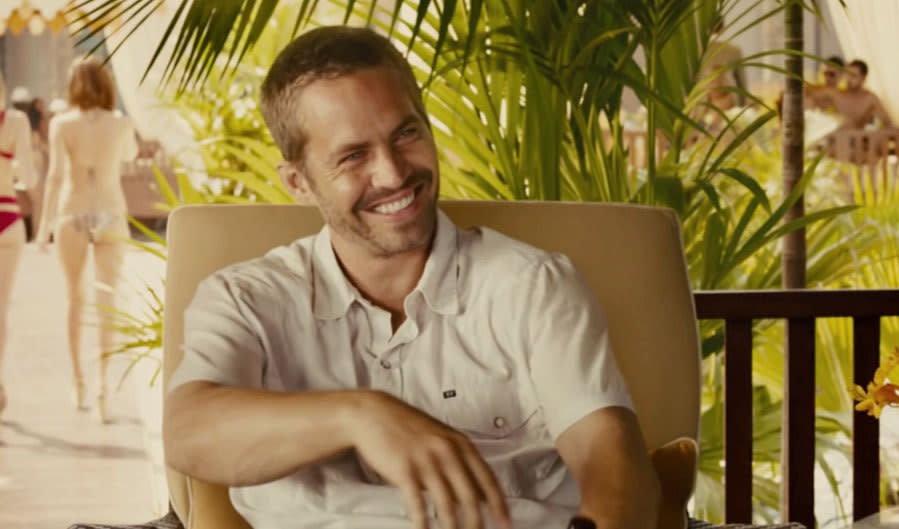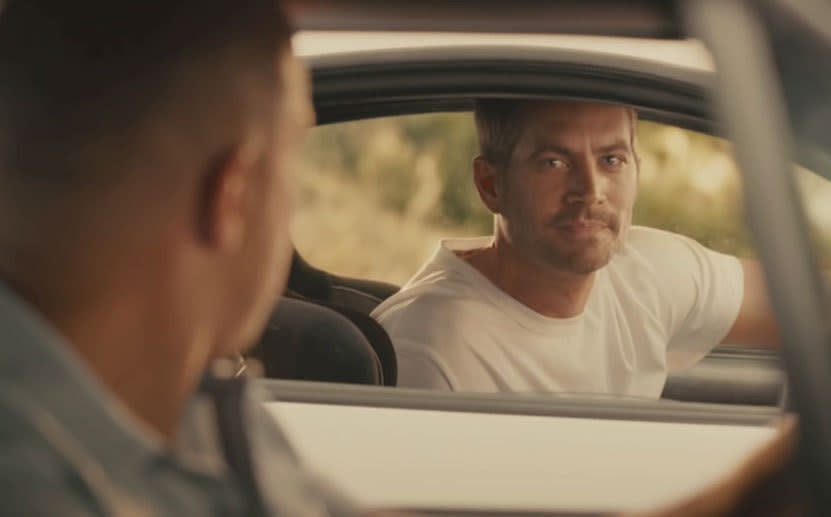How 'Impossible' CGI Brought Paul Walker Back To Life In Fast 7

The visual effects team behind ‘Fast & Furious 7’ has finally revealed the true extent of the work that went into completing Paul Walker’s performance for the film after he died halfway through filming.
New Zealand VFX firm Weta Digital, famous for working on ‘The Lord of The Rings’, ‘Avatar’, and the ‘Planet of the Apes’ reboots, says it completed over 350 VFX shots to complete Walker’s performance, using many effects that had never been done before.
Speaking to Variety Joe Letteri, Weta Digital senior VFX supervisor, said the technology required for the epic feat was “barely possible last year when we did it.”
He says the close-up shots of Walker proved to be the most difficult.
“We had to complete a performance - what Paul Walker would have done if he’d been able to continue. And it had to be his performance.” Letteri says this would have been impossible without close-ups because “anything else would have shortchanged his performance and the film.”

This proved to be much more difficult than expected as no digital body scans of Walker, usually used by Weta to recreate characters with performance capture, existed.
The team had to scour through old footage of the star, including outtakes from ‘Fast & Furious 7’ and previous installments of the franchise, to build up a reference library of his performance as Brian O’Conner, and then they had to relight those shots to match the lighting of the new scenes.
- Aladdin Fan Theory Confirmed
- Doc Brown and Marty McFly Reunited
Weta scanned in Walker’s brother Cody and Caleb, as well as actor John Brotherton who also appears in the film and bears a close physical similarity to the departed actor, and got them to perform scenes as O’Conner. Then the images and footage in the reference library were used to apply Paul Walker’s appearance to the performance capture models.

Above: Caleb and Cody Walker, and John Brotherton
These digital models were extensively worked on to ensure the hair and skin matched Paul’s, including how his facial muscles moved, how his skin colour changed, and even how he blinked.
Weta’s visual effects supervisor Martin Hill says their goal was to create a photorealistic digital human that would blend in seamlessly with the film’s human stars.
“That’s a high bar in itself, to create that. Beyond that, this actor was known to millions of fans, and this had to be Paul Walker — more specifically, Walker in character as Brian O’Conner.”

One of the most difficult shots to achieve, Hill adds, was one glimpsed in the film’s trailers that saw the gang standing on a hillside overlooking Los Angeles.
“[Brian] is giving meaningful looks to the others and delivering dialog, and he’s full frame. That visual effects work had to be invisible.”
Another tricky shot saw Walker’s full-length digital model acting opposite an injured Kurt Russell as they drove in the desert, and one of Walker’s character reflecting on a near-death experience.
The visual effects for the film that hit cinemas earlier this year were a collaborative effort between a number of VFX companies around the world, and Hill says the results were “the high point” of his career.
“We knew we were doing something special for the filmmakers, the fans, the family — and for Paul’s legacy. We wanted to give him the sendoff that he deserved.”
Source: Variety
Read More
- Depressing Reality Of BTTF 2015
- Fan Builds Real Thor’s Hammer
- Has Arnie Been Lying About His Height?
Image credits: Universal Pictures/Rex Features

 Yahoo Movies
Yahoo Movies 
